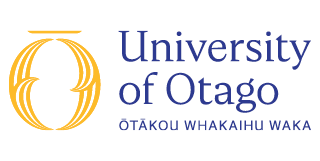Overview
An evaluation of the normal and abnormal structure and function of neuromusculoskeletal tissues. Includes the anatomy, histology, physiology and pathology of these tissues.
The modules in this paper aim to provide a sound understanding of the basic neuromusculoskeletal sciences relevant to musculoskeletal practice. The paper assumes sound undergraduate understanding of anatomy and physiology relevant to the musculoskeletal system and is a postgraduate paper that will extend your knowledge relevant to clinical practice.
About this paper
| Paper title | Musculoskeletal Tissues |
|---|---|
| Subject | Musculoskeletal Medicine |
| EFTS | 0.125 |
| Points | 15 points |
| Teaching period | Not offered in 2024, expected to be offered in 2025 (Distance learning) |
| Domestic Tuition Fees ( NZD ) | $1,578.88 |
| International Tuition Fees | Tuition Fees for international students are elsewhere on this website. |
- Limited to
- MHealSc, PGCertHealSc, PGCertMSM, PGDipHealSc, PGDipMSM, PGDipPhty, MPhty
- Eligibility
- Appropriately qualified health professionals (e.g. medical practitioners, physiotherapists, occupational therapists, nurses, osteopaths, chiropractors, etc.) - a sound understanding of anatomy and physiology at undergraduate level is required.
- Contact
Further information:
Administrator Client Services
Department of Orthopaedic Surgery and Musculoskeletal Medicine
University of Otago, Christchurch
PO Box 4345, Christchurch, New Zealand
Tel +64 21 279 1423
Email msmandpainstudies.uoc@otago.ac.nz- More information link
View more information about the Musculoskeletal and Pain Management Programmes
- Teaching staff
Paper Co-ordinator Dr Stu Thomson, plus invited specialists for various modules.
- Paper Structure
MSME 702 consists of eight modules, taught sequentially using online resources (via Blackboard), readings and online teaching sessions via Zoom Videoconferencing.
The following topics areas are covered:
- Constituents of connective tissue
- Bone
- Articular cartilage
- The muscle tendon unit
- Nerve structure and function
- Injury, repair, disuse and training - muscle tendon unit
- The intervertebral discs
- Repair and regeneration of tissue
- Teaching Arrangements
This Distance Learning paper is taught remotely.
Material is delivered electronically and is distance taught. There are eight fortnightly online teaching sessions. Interdisciplinary discussion is encouraged.
- Textbooks
There is no single textbook that encompasses the material covered in this paper. Readings will be provided for students to access via the Library, with additional readings and other multimedia material provided via Blackboard. Most systems textbooks devote some chapters to the biomedical basic sciences.
However, a useful in-depth reference text is:
Orthopaedic Basic Science (softcover) [Paperback] Thomas A. Einhorn MD (Author, Editor), Regis J. O'Keefe MD (Author, Editor), Joseph A. Buckwater MD MS (Author, Editor) Publisher: American Academy of Orthopaedic; 3 Pap/Dvdr edition (July 30, 2006) Language: English ISBN-10: 0892033606 ISBN-13: 978-0892033607
- Graduate Attributes Emphasised
- Critical thinking, Information literacy.
View more information about Otago's graduate attributes. - Learning Outcomes
Students who successfully complete this paper will demonstrate:
- A wide and comprehensive knowledge of the various components of musculoskeletal tissues
- A good understanding of how these tissues interact with each other at a functional physiological, histological and molecular basis
